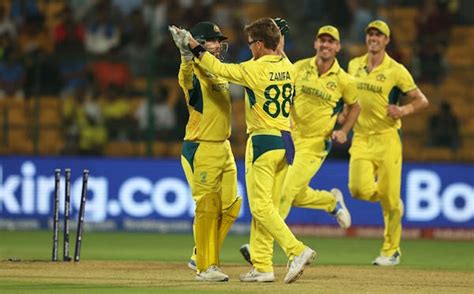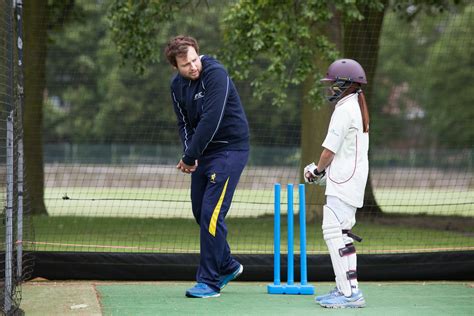Explore the evolution of cricket commentary, from its origins to modern advancements, diverse voices, and future trends shaping fan engagement.Cricket, a sport steeped in tradition and fervor, has witnessed dramatic transformations over the years—none more significant than in the realm of commentary. The Evolution of Cricket Commentary: How It Has Changed Over the Years takes you on an insightful journey through the annals of this dynamic field. From the early days of handwritten notes to the engaging narratives of today, commentary has evolved to enhance the spectator experience. As technology reshapes how fans interact with the game, varied commentary styles have emerged, fostering a deeper connection between viewers and the sport. This article delves into the rich history, transformative trends, and future possibilities of cricket commentary, highlighting the diverse voices that now resonate within the cricketing community. Join us as we celebrate the evolution of this vital aspect of cricket culture, which continues to engage and inspire fans around the globe.
The Origins of Cricket Commentary: From Notes to Narration
The journey of cricket commentary evolution can be traced back to the earliest days of the sport. In its infancy, cricket commentary was predominantly conducted through handwritten notes or telegrams. These messages would be relayed to a small, often intimate audience, conveying the excitement of the game in a somewhat stilted manner. The lack of real-time broadcasting meant that enthusiasts relied heavily on written updates, and those who could attend the matches often shared their observations verbally.
As cricket gained popularity, particularly in England, the need for more dynamic and engaging commentary emerged. The first significant shift occurred in the early 20th century when the BBC began broadcasting cricket matches on the radio. This marked a pivotal moment in the cricket commentary evolution, as it allowed listeners to experience the game in real-time, creating a sense of connection and excitement that notes could not provide.
The radio commentators played a crucial role in shaping the narrative surrounding cricket. They developed a unique style of storytelling that combined factual reporting with vivid descriptions, giving listeners a sense of being present at the match. This era saw iconic figures emerge in commentary, whose distinctive voices and engaging narratives became synonymous with the sport itself.
With the advent of television in the mid-20th century, cricket commentary evolution took another leap forward. The visual medium added a new layer of engagement for audiences, allowing commentators to describe not just the action but also the players’ expressions, the crowd’s reactions, and the overall atmosphere of the game. This transformation helped to elevate the role of commentators from mere reporters to integral parts of the cricketing experience.
Over the decades, as technology continued to advance, so too did the methods of commentary. The evolution from written notes to live radio broadcasts, and eventually to televised coverage with enhanced graphics and analysis, has fundamentally changed how fans interact with the sport. The blend of informational commentary and entertaining storytelling remains at the core of the cricket commentary experience, reflecting the ongoing progress of this vital aspect of the game.
Technological Advancements Impacting Cricket Commentary Experience
The cricket commentary evolution has been significantly influenced by various technological advancements, redefining how fans engage with the game. One of the most notable changes is the incorporation of real-time data analytics, which provides commentators with statistics and insights that enhance the storytelling and strategic analysis of matches. This technology allows commentators to draw on a wealth of information instantly, making their commentary richer and more informative.
Additionally, the introduction of various broadcasting technologies, such as high-definition cameras and drones, has transformed the visual aspect of commentary. These innovations enable viewers to experience the game from multiple angles and perspectives, while commentators can provide context and narrative that captures the intricacies of the game like never before.
Social media platforms and online streaming have also played a vital role in the cricket commentary evolution. Commentators now engage with fans in real time, answering questions and responding to comments during live matches. This dynamic interaction creates a sense of community among fans and elevates the overall viewing experience.
Furthermore, the emergence of augmented reality (AR) and virtual reality (VR) technologies is set to revolutionize cricket commentary in the future. These technologies promise to immerse fans in the game, allowing them to experience matches from the players’ perspectives and engage with the sport in unprecedented ways.
As technology continues to advance, the future of cricket commentary evolution appears promising, with a focus on enriching the viewer experience and enhancing the connection between fans and the game.
The Shift in Commentary Styles: Traditional vs. Modern Approaches
Over the decades, the landscape of cricket commentary has undergone significant transformation, reflecting broader changes in sports broadcasting and audience preferences. Traditional commentary was characterized by a formal, informative style that focused heavily on the technical aspects of the game. Commentators would provide detailed analysis of players’ techniques, strategies, and the state of the pitch, often using a straightforward narrative devoid of personal opinions.
As we delve into the cricket commentary evolution, it becomes apparent that modern approaches have embraced a more conversational tone. Today’s commentators often engage with the audience on multiple levels, incorporating humor, storytelling, and personal anecdotes into their commentary. This shift has not only made commentary more relatable but has also enriched the viewing experience for fans by creating a connection beyond the pitch.
Moreover, modern commentary has embraced diversity, featuring a broader range of voices and perspectives. This inclusivity allows for varying interpretations of the game, catering to a global audience that may connect with different styles and cultural references.
While traditional commentary relied heavily on descriptive language and a focus on the game’s technical elements, contemporary commentary often prioritizes engagement and entertainment, adding layers of insight and emotion to the sporting event. This evolution reflects a growing recognition of cricket as not just a sport but as a social and cultural phenomenon, with commentary playing a key role in shaping how fans experience the game.
Impact of Cricket Commentary Evolution on Fan Engagement
The evolution of cricket commentary has significantly transformed the ways in which fans engage with the sport. In the past, commentary was exclusively delivered via radio or through print media, often limited to a select few scholarly commentators who influenced the perception of the game. This traditional format didn’t allow for much interaction or participation from fans. However, with the advent of digital technology and social media, the landscape of cricket commentary evolution has undergone remarkable changes.
Today, fans are not just passive listeners; they actively participate in discussions, share their opinions, and engage in real-time debates through platforms like Twitter, Facebook, and dedicated cricket forums. This modern interaction has enriched the fan experience, allowing for a more collaborative and communal approach to following the sport. Fans can tweet their reactions during matches, respond to live commentary, and even challenge commentators directly on views and opinions shared during the play.
Furthermore, multi-lingual commentary options have opened up the game to a more diverse audience, encouraging broader fan participation. By allowing commentary in various languages, the sport becomes more accessible, thus expanding its reach and connecting with fans who might have previously felt alienated.
The enriched commentary experience, underpinned by technology, has allowed fans to curate their preferences, picking specific commentators or channels that resonate with their views or entertainment style. This customization has led to a more engaged fanbase, eager to share content, create memes, and partake in the cultural phenomena surrounding cricket.
The evolution of cricket commentary has redefined fan engagement. It has transformed how the audience interacts with the sport, making them co-creators of cricket culture. As technology continues to progress, one can only imagine how this interaction will further evolve, promising an exciting future for cricket enthusiasts worldwide.
Diverse Voices in Cricket Commentary: Inclusion Revolution
One of the most significant changes in cricket commentary evolution over the years has been the move towards a more inclusive and diverse representation in the commentary box. Traditionally dominated by certain demographics, the commentary landscape has opened up, reflecting a broader range of voices and perspectives that resonate with a more varied audience.
The inclusion revolution in cricket commentary focuses not just on gender diversity but also on ethnic and regional representation. As the cricketing audience grows more global and multifaceted, having commentators from diverse backgrounds allows for richer narratives and discussions that enhance the viewing experience.
The rise of female commentators is a particularly noteworthy aspect of this evolution. Pioneers like Isa Guha and Ebony Rainford-Brent have paved the way, bringing fresh insights and creating relatable role models for young aspiring cricketers, especially girls. Their presence in the commentary box signifies a shift towards recognizing the contribution of women in cricket, and it inspires greater participation in the sport.
Moreover, the inclusion of ex-players from various cricketing nations adds depth to commentary. These former athletes bring personal experiences and cultural nuances that enrich the audience’s understanding of the game, making it more engaging. Commentators from different regions can discuss unique playing styles and strategies, which highlights the sport’s global nature and showcases its diversity.
As the landscape of cricket commentary evolution continues to progress, it’s crucial for media organizations to prioritize diverse voices. This not only enhances the quality of commentary but also reflects the values of modern society, promoting inclusiveness and representation. Fans today seek authenticity and relatability, and a varied commentary team can create a strong connection with audiences, fostering a deeper love for the game.
Future Trends in Cricket Commentary: Predictions and Possibilities
The cricket commentary evolution is an ongoing journey, constantly shaped by technological innovations and the changing dynamics of the sport. As we look ahead, several key trends are likely to redefine the landscape of cricket commentary in the years to come.
One significant prediction is the rise of personalized commentary. With advancements in data analytics and artificial intelligence, fans may soon have the option to tailor their commentary experience. This could involve selecting specific commentators, focusing on particular statistics, or even choosing styles of narration that resonate more with individual preferences.
Additionally, the integration of augmented reality (AR) and virtual reality (VR) technologies is set to revolutionize how fans experience matches. Imagine watching a live game with real-time stats and player insights overlaid onto the field through AR glasses. This immersive experience could lead to a deeper understanding of the game and enhance viewer engagement.
The continuing importance of diversity in voices within commentary teams can also be anticipated. With fans increasingly seeking representation, we are likely to see a push for more varied backgrounds in cricket commentary. This will not only enrich the storytelling aspect of the game but also reflect the global nature of cricket itself.
Moreover, as social media platforms evolve, they may play a larger role in cricket commentary. Commentators may collaborate with platforms to engage in interactive sessions, allowing fans to ask questions or vote on the topics discussed during live matches. This two-way engagement will further bridge the gap between fans and commentators, enhancing the overall viewing experience.
The persistent development of data-driven commentary will continue to grow. Commentators will increasingly rely on analytics and predictions during matches, providing richer insights and elevating the strategic aspects of cricket that fans crave. The blend of traditional commentary with cutting-edge data insights promises to make future broadcasts more compelling than ever.
The future of cricket commentary holds exciting possibilities, with trends toward personalization, technology integration, diversity, interactive engagement, and data reliance paving the way for a more dynamic and inclusive viewing experience. As these trends unfold, the cricket commentary evolution will surely remain at the forefront of enhancing fan engagement and the overall enjoyment of the sport.
Frequently Asked Questions
What is the historical background of cricket commentary?
Cricket commentary has its roots in the late 19th century when matches were covered through written reports in newspapers. The first radio broadcasts began in the 1920s, making the game more accessible to the general public.
How has technology influenced cricket commentary?
Technology has dramatically transformed cricket commentary by introducing tools such as ball tracking, ultra-slow motion replays, and graphics, which provide viewers with a deeper understanding of the game and enhance the overall viewing experience.
What role do commentators play in a cricket match?
Commentators provide live analysis, context, and entertainment during a match. They explain the strategies, player performances, and conditions, helping audiences engage with the game more deeply.
How has the audience’s expectations changed regarding commentary?
Audiences now expect more interactive and informative commentary, including real-time statistics, expert analysis, and engaging storytelling, as the popularity of cricket has grown globally.
What are some notable changes in commentary style over the years?
Commentary styles have evolved from formal and descriptive to more conversational and entertaining formats. Many modern commentators use humor, anecdotes, and personal insights to connect with audiences.
How has the rise of social media affected cricket commentary?
Social media has added a new layer to cricket commentary, allowing fans to engage with commentators and players in real-time. It has also led to the rapid dissemination of opinions and highlights across various platforms.
What can we expect from the future of cricket commentary?
The future of cricket commentary is likely to be shaped by advancements in technology such as virtual reality and artificial intelligence, potentially offering personalized commentary experiences that cater to individual viewer preferences.








